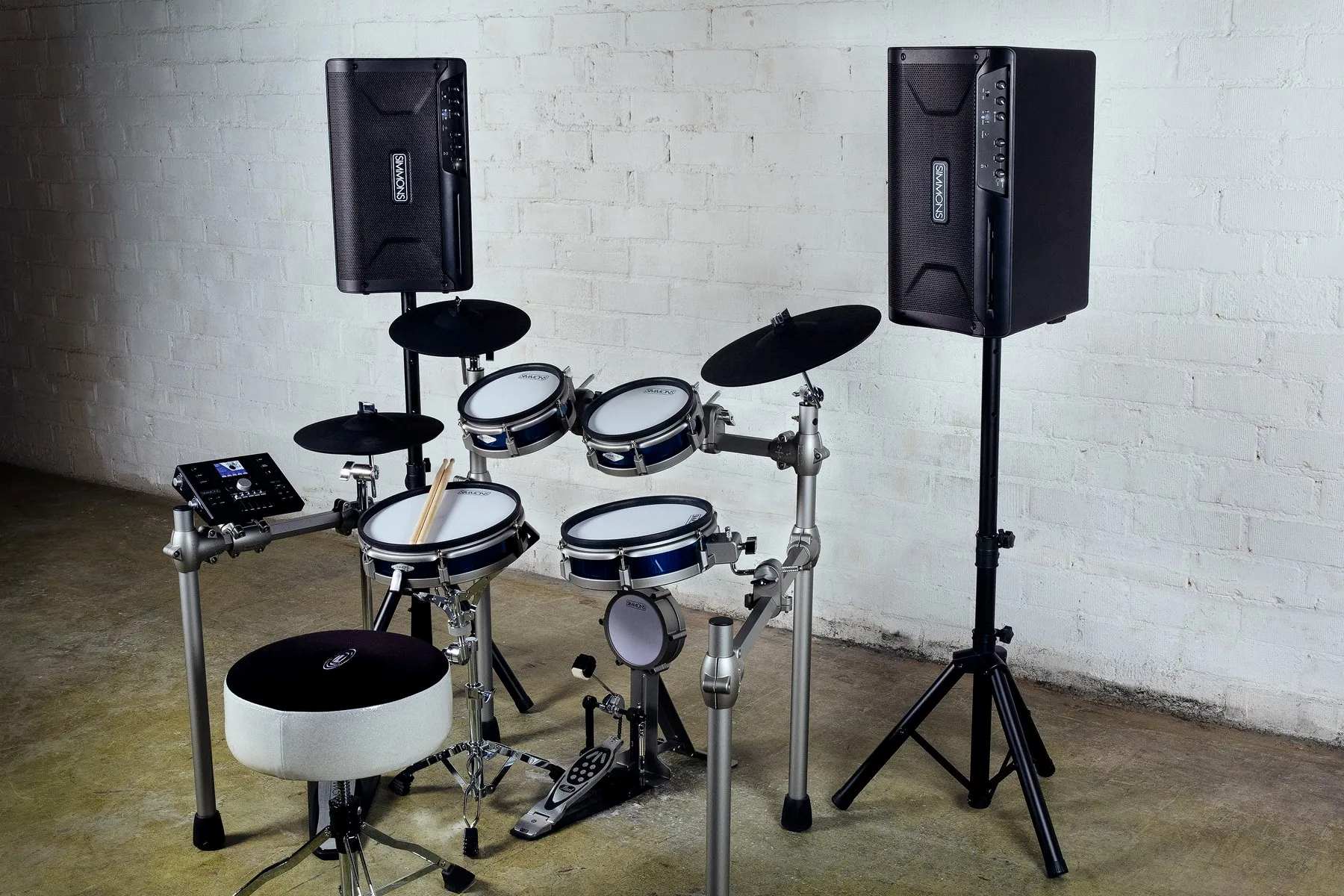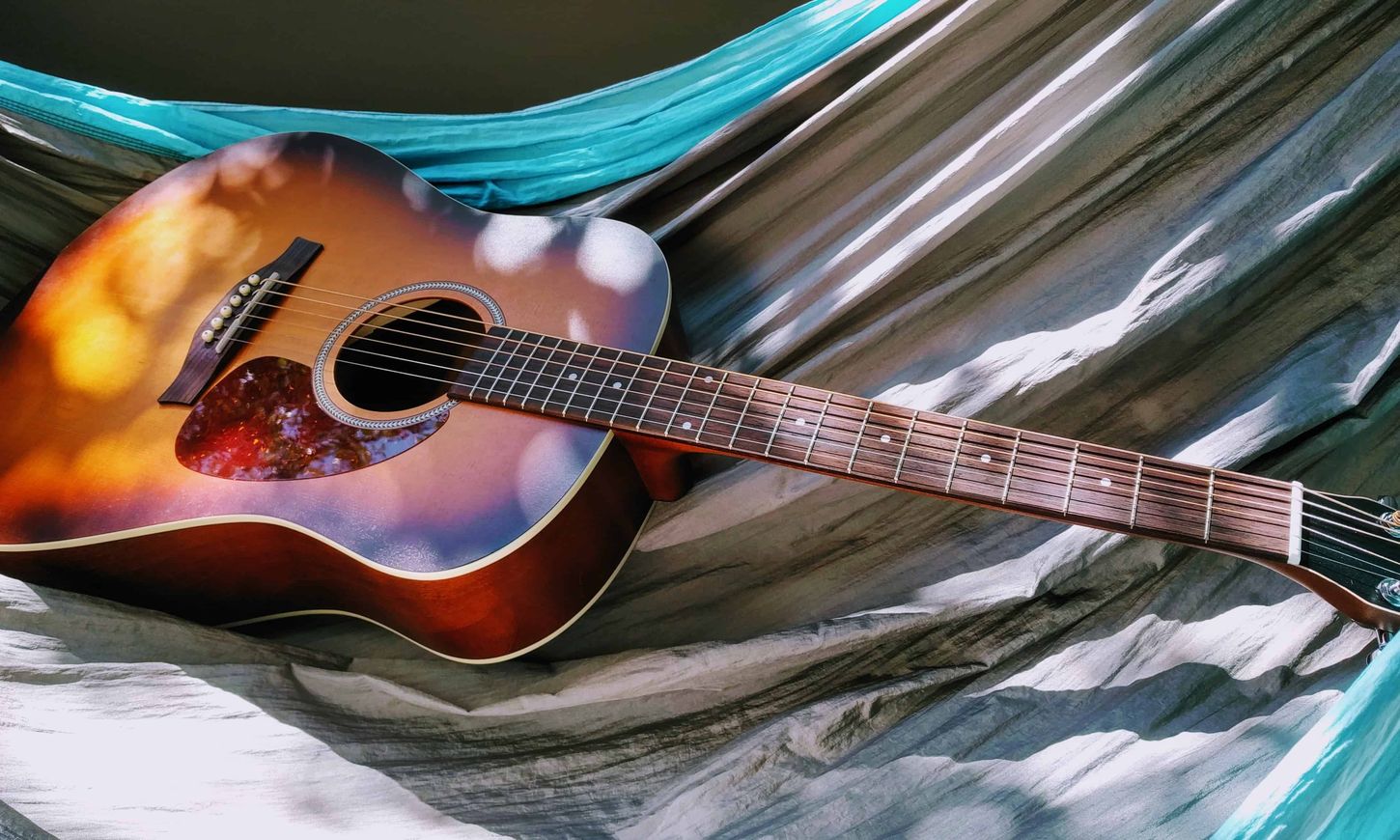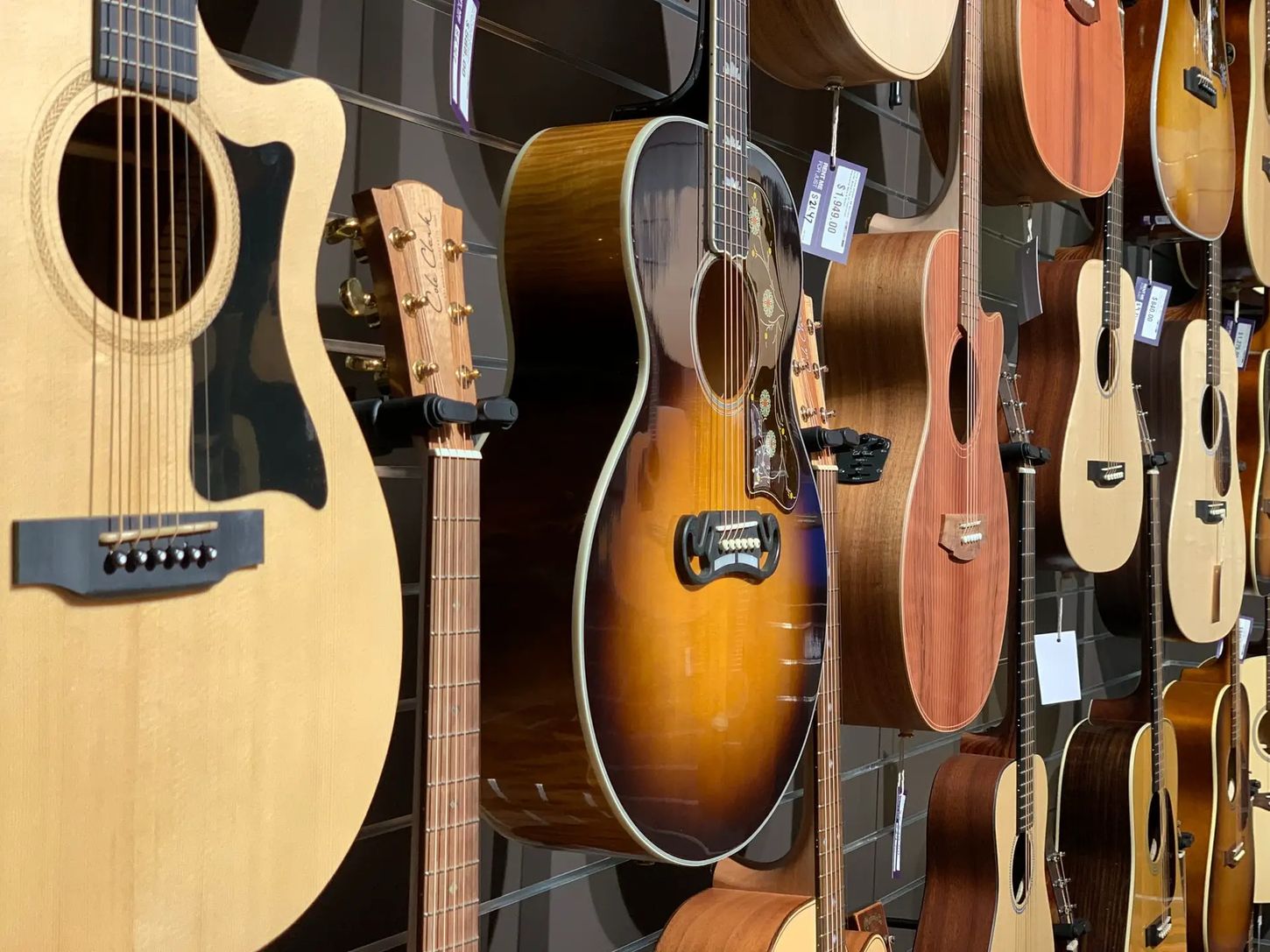Home>Production & Technology>Acoustic>How To Make Acoustic Guitar Sound Better


Acoustic
How To Make Acoustic Guitar Sound Better
Published: March 12, 2024
Learn how to improve the sound of your acoustic guitar with our expert tips and techniques. Enhance your playing and get the best out of your instrument.
(Many of the links in this article redirect to a specific reviewed product. Your purchase of these products through affiliate links helps to generate commission for AudioLover.com, at no extra cost. Learn more)
Table of Contents
Choosing the Right Strings
Selecting the right strings for your acoustic guitar is crucial for achieving the best sound and playability. With a wide array of options available, it's essential to understand the key factors that influence the choice of strings.
Material
The material of the strings significantly impacts the tone and feel of the guitar. Phosphor bronze strings are known for their warm, balanced tone, making them a popular choice for acoustic guitars. On the other hand, 80/20 bronze strings produce a brighter and crisper sound, ideal for those seeking enhanced clarity and projection. Additionally, silk and steel strings offer a softer feel, making them suitable for fingerstyle playing and folk music.
Gauge
String gauge refers to the thickness of the strings, which directly affects the tension and playability. Lighter gauge strings are easier to fret and bend, making them ideal for beginners and players who prefer a more effortless playing experience. Conversely, heavier gauge strings offer a fuller tone and increased volume, making them suitable for strumming and aggressive playing styles.
Coating
Coated strings feature a protective layer that helps prolong their lifespan by preventing corrosion and buildup of dirt and grime. While uncoated strings are renowned for their natural, bright tone, coated strings are favored for their longevity, making them a practical choice for frequent performers and those looking to minimize string changes.
Brand
Various renowned brands offer a diverse range of acoustic guitar strings, each with its unique characteristics. Experimenting with different brands can provide valuable insight into the tonal nuances and playability offered by each manufacturer, allowing you to discover the perfect match for your playing style and sonic preferences.
By carefully considering the material, gauge, coating, and brand of the strings, you can tailor your acoustic guitar's sound and feel to align with your musical aspirations, ultimately enhancing your playing experience and the overall quality of your performances.
Adjusting the Action
The action of an acoustic guitar refers to the height of the strings above the fretboard. It plays a pivotal role in determining the playability and overall sound of the instrument. A well-adjusted action can significantly enhance the comfort of playing, facilitate smoother fretting, and contribute to improved intonation and tone.
Importance of Action Adjustment
The action of an acoustic guitar directly impacts the ease of fretting notes and chords. A high action can make it challenging to press the strings down, leading to finger fatigue and potential intonation issues. Conversely, an excessively low action may result in fret buzz, where the strings make unwanted contact with the frets, compromising the clarity and sustain of the notes.
Steps to Adjust the Action
-
Truss Rod Adjustment: The truss rod, located inside the guitar's neck, allows for subtle adjustments to the neck's curvature. By carefully turning the truss rod, the neck's relief can be optimized, influencing the action of the strings.
-
Saddle Height: The saddle, situated in the bridge of the guitar, directly affects the action. By sanding down or replacing the saddle, the action can be fine-tuned to achieve the desired height.
-
Nut Height: The nut, positioned at the top of the fretboard, also contributes to the action. Ensuring that the nut slots are appropriately filed to the correct depth can help in achieving an optimal action.
Seeking Professional Assistance
While adjusting the action of an acoustic guitar can greatly improve its playability, it's important to approach this task with caution, especially if you're unfamiliar with the intricacies of guitar setup. Seeking the expertise of a professional luthier or guitar technician is advisable, as they possess the necessary skills and tools to execute precise adjustments without compromising the instrument's structural integrity.
By meticulously adjusting the action of your acoustic guitar, you can tailor the instrument to suit your playing style and preferences, ultimately elevating your musical experience and enabling you to unleash the full potential of your beloved instrument.
Upgrading the Nut and Saddle
Upgrading the nut and saddle of an acoustic guitar can yield remarkable improvements in both playability and tone. These seemingly small components play a significant role in shaping the instrument's sound and overall performance. The nut, located at the top of the fretboard, and the saddle, situated in the bridge, directly influence the string height, spacing, and vibration transfer, making them critical elements in the guitar's setup.
Importance of Upgrading
The nut and saddle are commonly made from materials such as bone, synthetic bone, Tusq, or various types of plastic. While these materials serve their basic functions, upgrading to higher-quality materials can lead to noticeable enhancements in the guitar's tone, sustain, and resonance. High-quality bone or Tusq nuts and saddles offer superior density and transmission of vibrations, resulting in improved clarity, sustain, and overall tonal richness.
Material Considerations
Bone, derived from cattle, has long been favored for its exceptional tonal properties. Its dense and resonant nature allows for efficient transfer of string vibrations, contributing to a more articulate and balanced sound. Additionally, bone nuts and saddles are less prone to wear and tear, offering greater longevity compared to their synthetic counterparts.
Tusq, a synthetic material designed to mimic the tonal characteristics of bone, has gained popularity for its consistency and self-lubricating properties. It provides a balanced tonal response and can enhance the guitar's sustain and harmonic content. Furthermore, Tusq is renowned for its precise manufacturing, ensuring uniformity and reliability across different instruments.
Installation and Customization
Upgrading the nut and saddle involves precise shaping and fitting to ensure optimal string action and intonation. This process may require the expertise of a skilled luthier or guitar technician, as the components must be tailored to the specific dimensions and requirements of the instrument. Customizing the nut and saddle to accommodate different playing styles and preferences can further personalize the guitar's feel and responsiveness, allowing for a more tailored playing experience.
Sonic Impact
The upgraded nut and saddle can impart a discernible impact on the guitar's sonic characteristics. Improved sustain, enhanced resonance, and a more balanced tonal spectrum are among the benefits that players can expect. The enhanced transfer of string vibrations through the upgraded components can result in a more dynamic and expressive sound, enriching both strummed chords and intricate fingerstyle passages.
By upgrading the nut and saddle of an acoustic guitar, players can unlock the instrument's full potential, elevating its sonic capabilities and playability. The investment in high-quality materials and precise craftsmanship can yield substantial dividends, transforming an ordinary acoustic guitar into a refined and responsive musical companion.
Using a Higher Quality Pick
The significance of a guitar pick in shaping the tonal characteristics and playability of an acoustic guitar cannot be overstated. Often regarded as a simple accessory, the pick, also known as a plectrum, serves as a direct interface between the player and the instrument, exerting a profound influence on the sound, articulation, and overall musical expression.
Material and Thickness
When considering a higher quality pick, the choice of material and thickness becomes paramount. Picks are available in various materials, including celluloid, nylon, Delrin, and metal, each offering distinct tonal properties and tactile sensations. Additionally, the thickness of the pick contributes to its flexibility and attack, influencing the way it interacts with the strings.
Tonal Impact
Opting for a higher quality pick, crafted from materials such as Delrin or premium-grade nylon, can result in a more articulate and balanced tone. These materials offer enhanced rigidity and precision, allowing for greater control and definition in both strummed chords and intricate single-note passages. Furthermore, the tonal nuances and dynamic range of the guitar can be accentuated, providing a more responsive and expressive playing experience.
Comfort and Durability
In addition to tonal considerations, a higher quality pick often translates to improved comfort and durability. The refined edges and polished surfaces of premium picks contribute to a smoother glide across the strings, reducing friction and minimizing the risk of premature wear. Moreover, the superior resilience of high-quality picks ensures prolonged reliability, sparing players from frequent replacements and allowing for consistent performance over extended periods.
Personalized Preference
Exploring a range of pick materials and thicknesses can lead to the discovery of the ideal pick that aligns with individual playing styles and sonic preferences. Whether seeking a brighter and more percussive attack or a warmer and mellower response, the diverse options available in the realm of high-quality picks offer ample opportunities for players to tailor their sound and playing experience to suit their artistic inclinations.
Elevating the Playing Experience
By embracing the use of a higher quality pick, acoustic guitarists can elevate their playing experience, unlocking new dimensions of tonal richness, precision, and comfort. The subtle yet impactful influence of the pick on the instrument's sonic character underscores the significance of this often overlooked component, ultimately empowering players to realize their musical vision with heightened clarity and expressiveness.
Incorporating a higher quality pick into the acoustic guitar playing repertoire represents a simple yet effective means of refining the instrument's sonic potential and enhancing the joy of musical expression.
Properly Maintaining the Guitar
Proper maintenance is essential for preserving the playability, tone, and overall condition of an acoustic guitar. By implementing a consistent and thorough maintenance routine, players can safeguard their instrument against environmental factors, wear and tear, and potential performance hindrances. Here are key aspects of maintaining an acoustic guitar:
Regular Cleaning
Regular cleaning is fundamental to the upkeep of an acoustic guitar. Dust, oils, and debris can accumulate on the instrument's body, fretboard, and strings, potentially affecting its playability and tone. Using a soft, lint-free cloth, players can gently wipe down the guitar after each use, effectively removing surface contaminants and preserving the instrument's luster. Additionally, specialized guitar polishes can be utilized to maintain the finish and protect the wood from environmental elements.
Humidity Control
Maintaining the appropriate humidity levels is crucial for the well-being of an acoustic guitar. Fluctuations in humidity can lead to wood expansion or contraction, potentially causing structural issues and affecting the instrument's playability and tone. Utilizing a guitar humidifier, especially in dry environments, can help mitigate the adverse effects of low humidity, ensuring the stability and longevity of the instrument.
String Care
Regularly changing the strings of an acoustic guitar is vital for sustaining its optimal tone and playability. Over time, strings accumulate dirt, lose their brightness, and become prone to breakage. By adhering to a consistent string-changing schedule and utilizing high-quality strings, players can uphold the instrument's sonic integrity and responsiveness, enhancing their playing experience.
Neck and Fret Maintenance
Monitoring the neck relief and fret condition is essential for ensuring comfortable playability and accurate intonation. Periodic adjustments to the truss rod, if necessary, can help maintain the ideal neck curvature, promoting optimal string action and playability. Additionally, inspecting the frets for wear and potential sharp edges can prevent intonation issues and discomfort during playing.
Storage and Protection
Proper storage and protection are imperative for safeguarding an acoustic guitar from physical damage and environmental hazards. Utilizing a sturdy guitar case or stand can shield the instrument from impacts, temperature variations, and excessive humidity or dryness. Furthermore, storing the guitar away from direct sunlight and extreme temperatures can help preserve its structural integrity and finish.
By diligently adhering to these maintenance practices, players can ensure that their acoustic guitar remains in prime condition, allowing for consistent performance and the realization of its full sonic potential. Regular maintenance not only prolongs the instrument's lifespan but also enhances the overall playing experience, enabling musicians to derive maximum enjoyment and inspiration from their cherished acoustic companion.
Experimenting with Different Tunings
Exploring alternative tunings is a captivating journey that can unveil a myriad of sonic possibilities and creative inspirations for acoustic guitarists. While standard tuning serves as the foundation for many musical compositions, venturing into alternate tunings opens doors to unique voicings, resonances, and textures that can enrich musical expression and expand the guitarist's sonic palette.
Unleashing Creative Potential
Experimenting with different tunings empowers guitarists to break free from familiar chord shapes and progressions, fostering a sense of exploration and innovation. By altering the conventional tuning of the strings, new harmonic relationships and intervals emerge, offering fresh perspectives and igniting imaginative musical explorations. This creative liberation encourages players to approach songwriting, improvisation, and arrangement with renewed inventiveness, leading to the discovery of captivating melodies and evocative harmonies that may have remained undiscovered within the confines of standard tuning.
Diverse Tuning Options
A wealth of alternative tunings exists, each with its distinct sonic characteristics and emotive qualities. Open tunings, such as Open D (DADF#AD) and Open G (DGDGBD), provide lush, resonant chord voicings and facilitate slide guitar techniques, infusing compositions with a rich, open sound. Additionally, DADGAD tuning, renowned for its Celtic and folk music associations, offers ethereal, open-string drones and evocative modal possibilities, adding a touch of mystique to acoustic arrangements. Furthermore, altered tunings like Drop D (DADGBE) and Double Drop D (DADGBD) introduce extended low-end depth and facilitate powerful, low-register riffing, ideal for genres such as folk, blues, and rock.
Expressive Potential and Emotional Resonance
The exploration of alternative tunings transcends technical considerations, delving into the realm of emotional resonance and expressive potential. Each tuning possesses its unique tonal fingerprint, evoking distinct moods and atmospheres that can deeply resonate with both the player and the listener. From the haunting, melancholic allure of Open C (CGCGCE) to the shimmering, celestial qualities of DADF#AE tuning, the emotional spectrum encapsulated within alternative tunings offers a boundless wellspring of inspiration for crafting evocative musical narratives and evoking profound emotional responses.
Personalized Artistic Identity
Embracing alternative tunings enables guitarists to carve out a personalized artistic identity, distinguishing their musical voice and compositions with a signature sonic imprint. By integrating unconventional tunings into their repertoire, players can cultivate a unique sonic identity, characterized by distinctive chord voicings, resonant textures, and evocative harmonic progressions. This individualized sonic fingerprint not only enriches the guitarist's musical expression but also resonates with audiences, offering a captivating and memorable listening experience.
A Journey of Discovery
The exploration of alternative tunings represents a captivating journey of sonic discovery and artistic growth for acoustic guitarists. By embracing the diverse tonal landscapes and expressive potentials offered by alternative tunings, players can embark on a transformative musical odyssey, unlocking new dimensions of creativity, emotional resonance, and personalized artistic expression. This journey of sonic exploration not only enriches the guitarist's musical repertoire but also fosters a deepened connection with the instrument, inspiring boundless creativity and musical innovation.
Using a Guitar Humidifier
Maintaining the optimal humidity level is paramount for the well-being of an acoustic guitar. Fluctuations in humidity can exert profound effects on the instrument, potentially leading to structural issues, tonal degradation, and diminished playability. In this context, the utilization of a guitar humidifier emerges as a crucial tool for preserving the integrity and sonic characteristics of the instrument.
Importance of Humidity Control
Wood, the primary material in acoustic guitar construction, is inherently sensitive to changes in humidity. When exposed to excessively dry conditions, the wood can shrink and become susceptible to cracking, warping, or deformation. Conversely, high humidity levels can result in swelling and excessive expansion of the wood, posing similar risks to the instrument's structural stability. These fluctuations not only impact the physical integrity of the guitar but also influence its tonal properties, potentially leading to diminished resonance, altered pitch stability, and compromised overall sound quality.
Role of the Guitar Humidifier
A guitar humidifier serves as a proactive measure to mitigate the adverse effects of fluctuating humidity. By releasing moisture into the guitar's environment, the humidifier helps maintain a stable and optimal humidity level, safeguarding the instrument from the detrimental consequences of excessively dry or humid conditions. This proactive approach not only protects the physical integrity of the guitar but also preserves its tonal richness, sustain, and playability, ensuring consistent performance and sonic excellence.
Types of Guitar Humidifiers
Various types of guitar humidifiers are available, each designed to address specific humidity control needs. Soundhole humidifiers, which are placed inside the guitar's soundhole, offer a convenient and effective means of distributing moisture throughout the instrument. Additionally, case humidifiers, designed to be placed within the guitar case, provide a controlled microclimate for the instrument, offering protection against external humidity fluctuations. Furthermore, in-room humidifiers can be utilized to regulate the overall humidity of the environment where the guitar is stored, ensuring a stable and conducive atmosphere for the instrument.
Maintenance and Monitoring
Regular maintenance and monitoring of the guitar humidifier are essential to ensure its effectiveness. Checking the humidifier's moisture levels and refilling or recharging it as needed is crucial for sustaining a consistent humidity level within the guitar's environment. Additionally, periodic inspection of the guitar for any signs of humidity-related issues, such as fret sprouting or changes in the neck curvature, can help identify and address potential concerns before they escalate.
Preserving the Instrument's Legacy
By incorporating a guitar humidifier into the instrument care regimen, players can safeguard the long-term integrity and sonic excellence of their acoustic guitar. This proactive approach not only protects the instrument from the detrimental effects of humidity fluctuations but also upholds its legacy as a cherished musical companion, ensuring that it continues to resonate with timeless tonal beauty and unwavering playability for generations to come.











